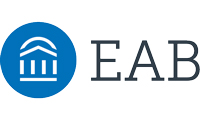Universities often already have all the tools they need to boost international student enrolment but overestimate the barriers to success
The global pandemic threw international student recruitment into jeopardy, and many universities were left in a vulnerable and uncertain position. As institutions seek to rebuild and boost student numbers post-Covid, there are many unknowns to grapple with.
In webinar discussion hosted by EAB in partnership with Times Higher Education, two industry experts from EAB outlined some of the ways in which universities in Australia and New Zealand could harness hidden or underutilised resources to boost their international student recruitment, often at minimal cost.
Seeking a temperature check on international recruitment challenges post-pandemic, EAB surveyed about 50 of the 2,100 universities it works with around the globe.
Michelle DiMenna, associate director at EAB research, noted that Covid-19 had “disrupted the higher education ecosystem and will do for years to come”.
Many of those surveyed had suffered workforce cuts; about 4 per cent of higher education staff had been lost in US institutions, while in Australia one in five had been laid off.
“The pandemic also drastically altered the third-party recruiting landscape, with many agencies having to cut staff themselves,” DiMenna added. As such, “volatility continues to dominate economic markets”, she said. “They’re having to do more with less. That condition is likely to persist for years to come.”
But rather than playing to institutional strengths, for many universities, “student recruitment is happening by happenstance…[which] becomes an increasingly risky proposition”, she said.
EAB experts put forward a number of suggestions for universities to change their approach to international recruitment.
“Universities should consider, ‘What is the ultimate goal for students looking to study in my country?’” DiMenna said.
According to Larisa Hussak, senior director at EAB research, institutions that were able to overcome some of these challenges tended to invest in an “inside-out approach” to recruitment, meaning that they took “an internal scan” to assess the institution’s core strengths and unique selling points.
Positive case studies from the EAB network included incentives for faculty members with existing global connections to take on aspects of recruitment. One university reported a significant improvement after offering travel stipends to staff who had existing travel plans. A portion of travel costs were covered on the condition that staff members visited a school or recruitment fair while abroad.
But an often-overlooked resource, was international students themselves, Hussak said. “Your current students are powerful, [if] at times unpredictable, representatives of the institution…Their voices and experiences carry a lot of weight in prospective markets and can make a big impact on students willing to enrol.”
Ensuring that existing international students had a positive university experience was, therefore, key because they would pass on those experiences directly and indirectly to friends and on social media, Hussak added.
The power of informal networks could be also utilised by institutions in a targeted way: some EAB members reported employing students as ambassadors to document their experiences of university online and to attend panels and recruitment events themselves.
The ideas presented offered a snapshot of some of the resources that EAB provides to member institutions seeking to boost their global partnerships. “We adopt a global approach, providing universities around the world with research strategy and support to realise and pursue their missions,” Hussak concluded.
The panel:
- Michelle DiMenna, associate director, EAB Research
- Larisa Hussak, senior director, EAB Research
Watch the webinar on demand above or on the EAB YouTube channel.
Find out more about EAB.








